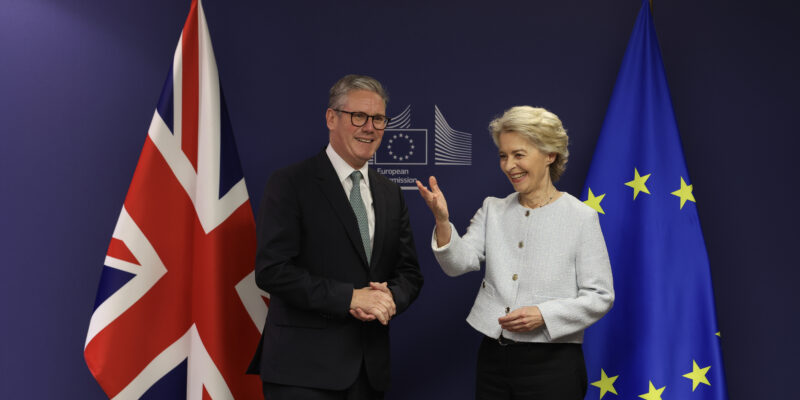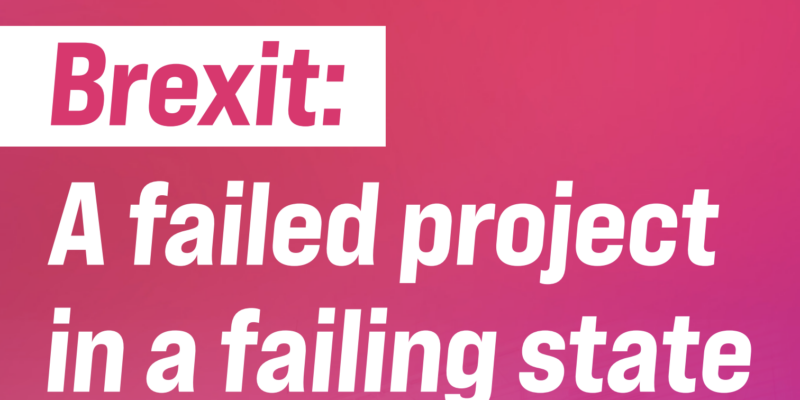How does the Turing scheme compare to the EU’s Erasmus+ programme?
The government’s flagship education mobility scheme has merit but lacks key features of the Erasmus+ programme.

Back in December 2020, during its troubled trade talks with the EU, the UK government announced it had failed to reach agreement on continued participation in the Erasmus+ education programme. Instead, the UK would go it alone with its own scheme. So, over two years on, we investigated how the UK’s Turing programme compares.
We used four different criteria: (a) funding support as a whole; (b) funding for individual students/trainees; (c) geographical scope of the scheme; and (d) funding for educators to pursue collaborative partnerships.
What has the UK left?
Erasmus (‘European Region Action Scheme for the Mobility of University Students’) has been running since 1987. Erasmus was one of a number of ambitious European Commission initiatives at the time. It originally facilitated student exchange between universities, which allowed students to incorporate their overseas studies into their university degree at home. Today its remit has extended outwards considerably into a much wider gamut of education and training programmes under the banner of Erasmus+.
Does the Turing scheme match UK Erasmus funding per student?
In 2019, the UK’s last year of membership of the EU, €144.7m in funding was received to support learning abroad. This covered 54,619 participants, including not only higher education students but those in school, further and vocational education. The new Turing Scheme does not match these overall figures.
The government has allocated £110m to the scheme to cover 40,000 participants. What’s more, the EU scheme has radically increased its budget for the next funding round (2021 – 2027) to €26.2 billion, up from €14.7 billion, an increase of 56%. The UK would have benefited from this additional support were we still a member.
VERDICT: The Turing Scheme does not match the funding that the UK received as an EU member. Whereas the EU is increasing its budget for Erasmus+, the UK has scaled it backwards.
How does individual student funding compare?
In the academic year 2020 – 2021, the EU provided €420 per month for higher education students going to group 1 (more expensive) countries and €370 per month for (less expensive) group 2 and group 3 countries. There is also an additional €120 available for students from disadvantaged backgrounds. Work abroad/traineeships received more support (€520 / €470 and an extra €20 respectively).
In the Turing Scheme, higher education students to Group 1 destinations receive a similar amount for placements that last more than eight weeks (£380), and for Group 2 and 3 destinations (£335). Those from disadvantaged backgrounds receive an extra £110. However, for placements that last between four to eight weeks they receive more (Group 1 – £136.25 per week, Group 2 and 3 £120). For further education and vocational training, the Turing scheme calculates the support available differently but is, in principle, potentially more generous:
- Group 1: £109 per day for the first 14 days, £76 per day after the 14th day
- Group 2: £94 per day for the first 14 days, £66 per day after the 14th day
- Group 3: £80 per day for the first 14 days, £56 per day after the 14th day
For both the Erasmus+ and Turing schemes 100% funding of living costs is available for students with special educational needs and disabilities.
VERDICT: Funding for higher education students is similar to Erasmus. The funding for further and vocational education students is actually better under the Turing scheme.
What about geographical scope?
The mechanics of the Turing scheme are different to Erasmus+ as it funds UK students through UK institutions in order to undertake placements overseas. It does not have an exchange programme structure and is not focused on Europe in the same way. As UK institutions are very interconnected with other educational organisations globally and well regarded overseas, it is generally not going to be difficult for them to place their students with partners internationally. This means that the UK system does have the advantage of having a far wider geographical scope and the list of potential destination countries on the Turing scheme website is long.
VERDICT: It is early days, but on paper the UK scheme is more globally orientated.
What about collaborative research partnerships?
This is a major weakness of the new Turing scheme. In 2019, the UK received €56.6 million in grants for collaborative international education partnerships and projects, building link between institutions across borders. This extended to 1543 organisations and 274 projects. There is no money available for these kinds of initiatives under the new Turing scheme. So, this is a significant blow to internationally-orientated UK educators.
VERDICT: A clear win for Erasmus+ over the Turing scheme.
OVERALL VERDICT? The Turing scheme has merit but it’s not a ‘benefit of Brexit’
The elements of the Turing scheme that are positive could have been pursued by the UK as an EU member. In fact, it would make much more sense to fund an international student mobility programme on top of continuing UK membership in Erasmus+, rather than as a substitute to this programme. These are ‘low cost, high rewards’ schemes that bring big benefits to education and culture for relatively low amounts of money in public spending terms. In addition, the UK has also lost out on the large increases in money available in the 2021-2027 EU budget.
February 23, 2022
Brexit Spotlight is run by Another Europe Is Possible. You can support this work by joining us today. The website is a resource to encourage debate and discussion. Published opinions do not necessarily represent those of Another Europe.





